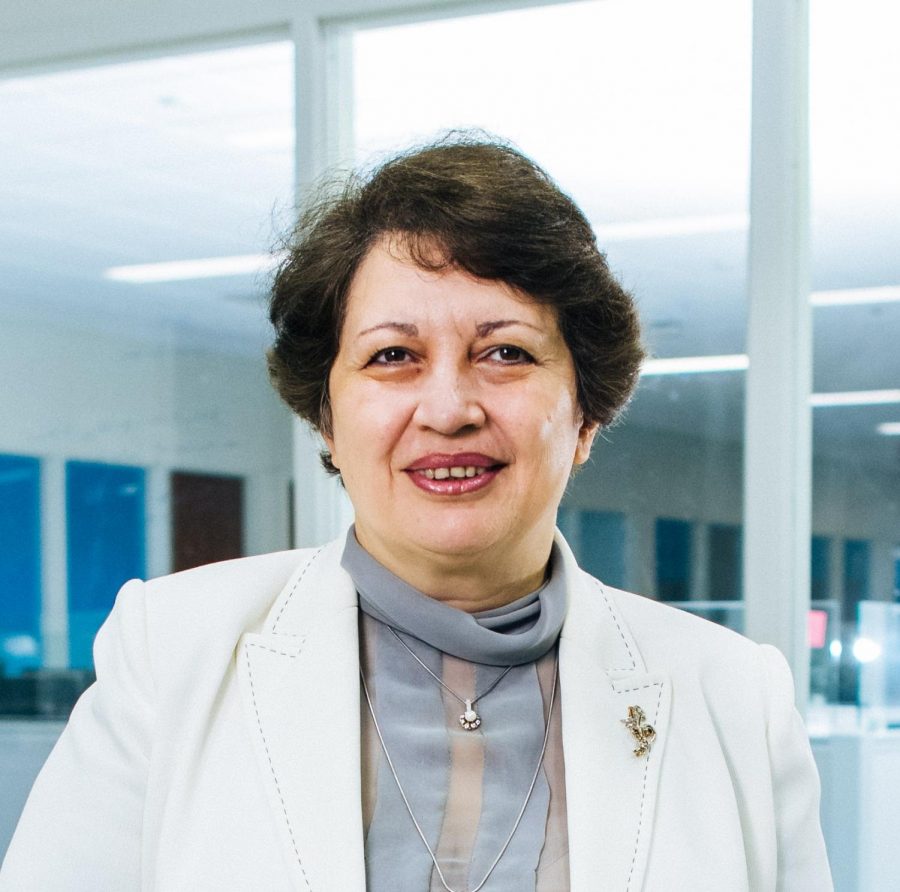Research combines drone delivery with ride share
Photo courtesy of Naira Hovakimyan
Professor Naira Hovakimyan is leading the development of a drone delivery network by incorporating ride-share systems.
October 15, 2018
While shared rides are a popular form of transportation for many students, a team of researchers at the University is working on developing a new system to deliver packages by combining drones with ride-share vehicle systems, such as Uber.
Naira Hovakimyan, professor in Engineering, is leading a research team on synergetic drone-delivery networks to make deliveries faster, more cost-efficient and increasingly environmentally friendly, thanks to a $1.5 million grant from the National Science Foundation.
“The majority of parcels shipped today are under five pounds, so if you have a magnetic dock on the top of the cars that can attach the parcels, then the driver does not have to change anything,” Hovakimyan said. “When the driver is part of the system, his GPS coordinates are collected and the drones can identify sets of cars that would be suitable for shipping the parcel.”
The last mile to a destination included in a delivery drop-off consumes 50 percent of delivery costs. This is because delivery drivers have to navigate neighborhoods in areas of high population density, Hovakimyan said.
“The post office will not have to spend on its cars or on its gas. It will take advantage of existing cars on the roads and it will help with traffic jams, with environment, with everything,” she said.
Get The Daily Illini in your inbox!
While Hovakimyan is excited about the future of the research, she said there are many challenges and factors she and her team must consider along the way.
Gabriel Barsi Haberfeld, doctoral candidate in Engineering and research assistant, compared the synergetic drone system technology to the introduction of cars to society.
“When cars showed up, some people hated them because cities and communities weren’t designed to handle cars,” Haberfeld said. “If we start throwing drones and other robots into the mix, people might get stressed or upset and they might not like it or receive them as well.”
Arun Lakshmanan, doctoral candidate in Engineering and research assistant, said it is best for the team to start designing robots from the ground up with humans in mind.
“Especially when you have humans walking around in the area that you want to operate in, you have to be extra careful,” Lakshmanan said.
If the synergetic drone system is put to use, the drones will be operating near humans, especially in highly urbanized areas.
“We consider the perceived safety of humans, meaning that we want to predict how a human feels toward a robot operating close to them,” said Hyung Jin Yoon, doctoral candidate in Engineering and research assistant.
Yoon said the team works with research psychologists to learn about human-robot interactions to create more effective robotic designs.
Lakshmanan said the team is excited to work on what he calls a large-scale robotics problem.
“The project really has a ton of different small objectives that combine into one big thing,” Haberfeld said. “You have scheduling problems, general logistic problems, human interaction problems and you have machine running problems in how you navigate.”
Hovakimyan hopes to use the NSF grant to derive a theoretical framework of synergetic drone technology.
“Later, if we get more funding, we may even build a drone docking station and do some experiments in our lab of how we can drop and pick up the parcels,” she said.
Lakshmanan said it may be as many as 10 years before people begin to see synergetic drone systems.
“This is a broad field of research with several problems that need to be solved and several Ph.D. pieces that need to be written before this can actually be a product,” he said.







